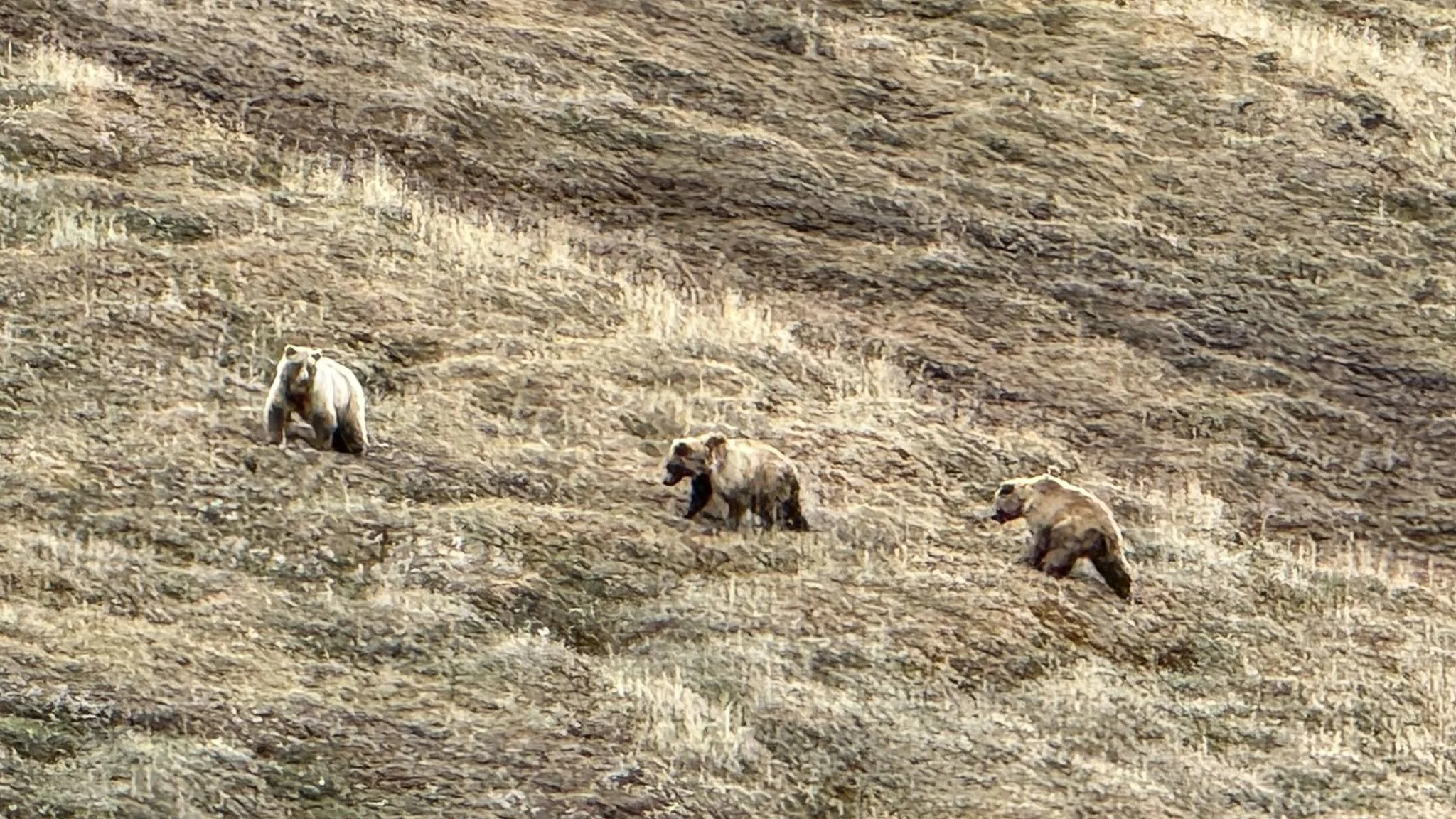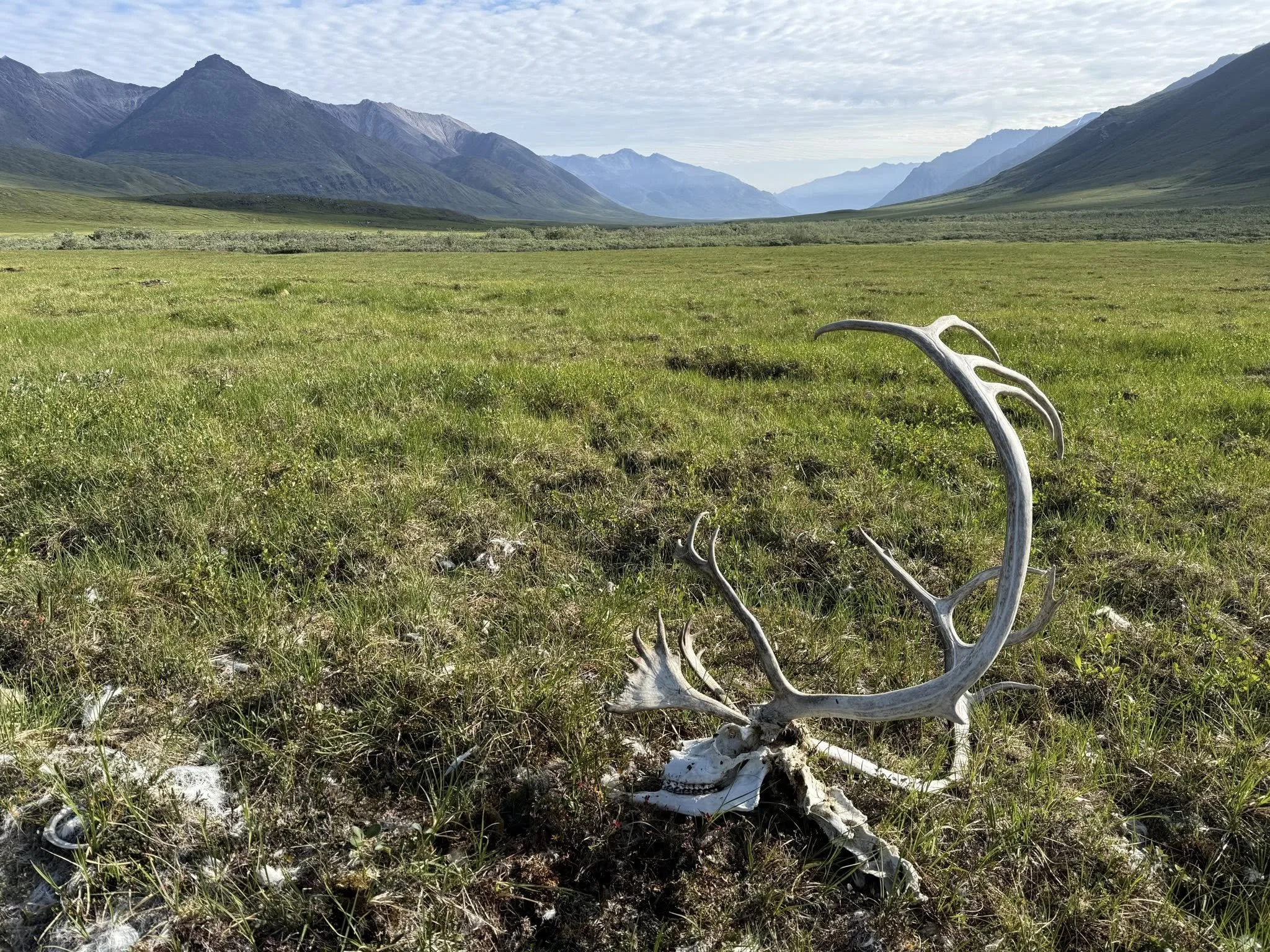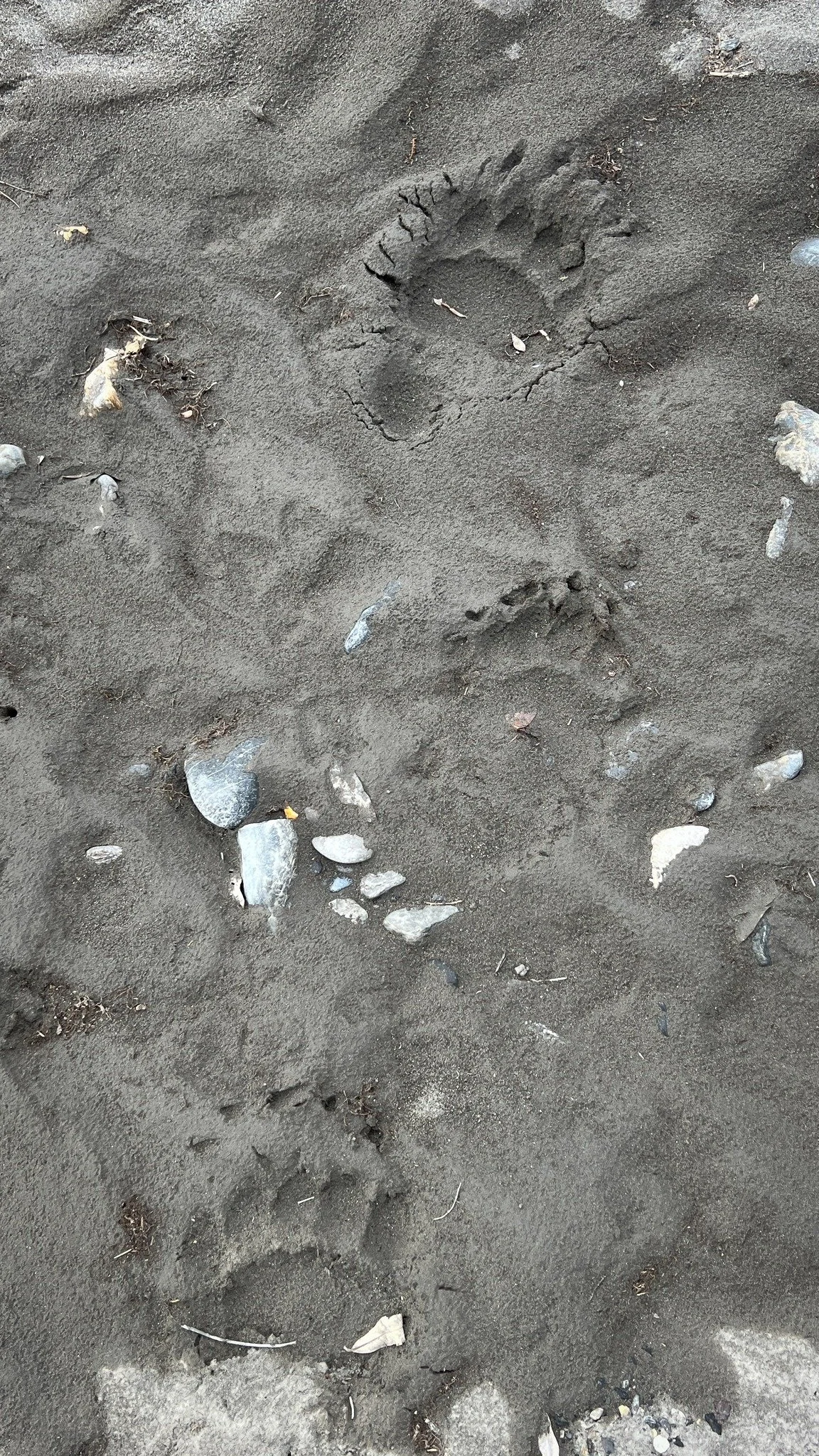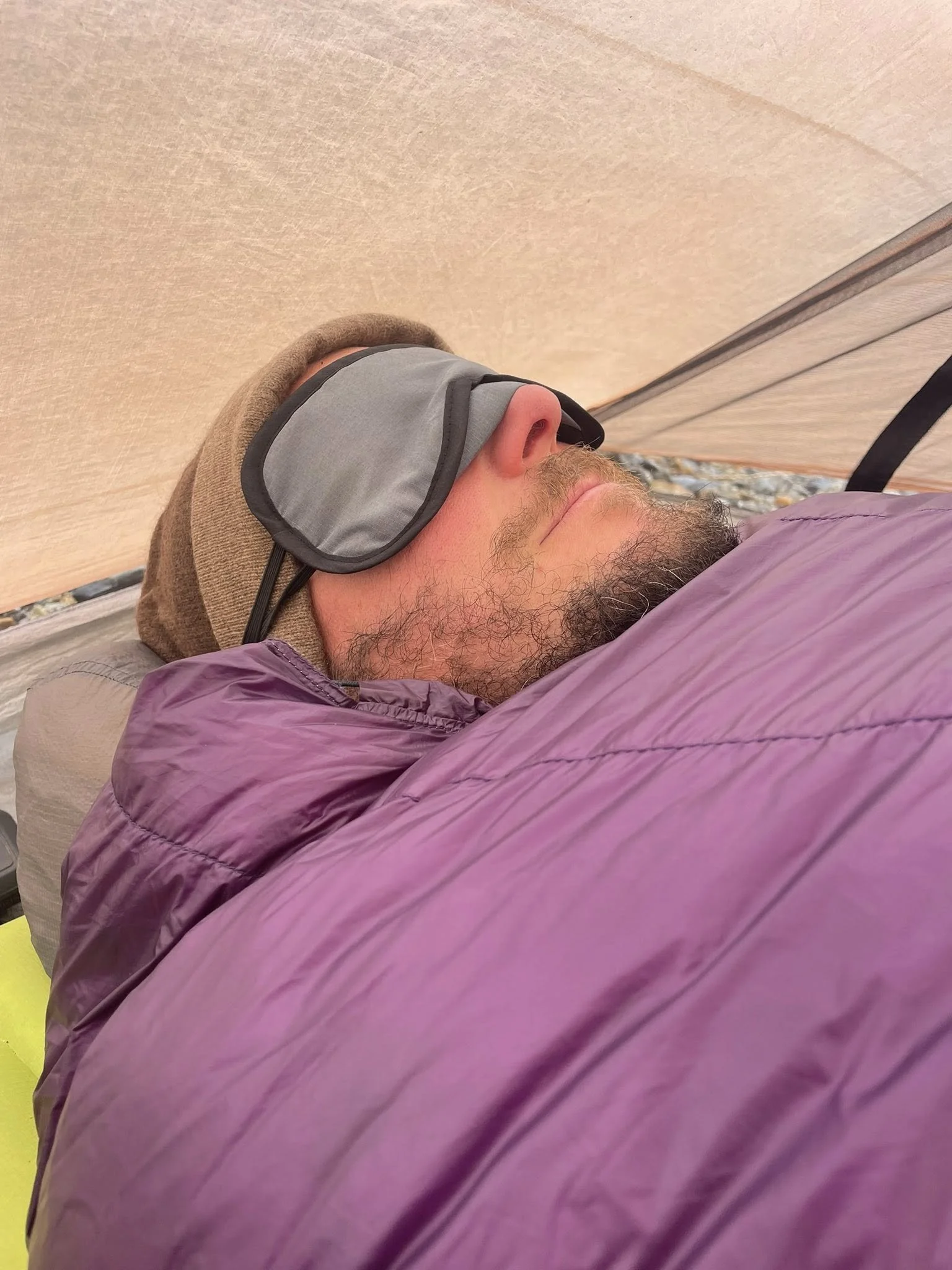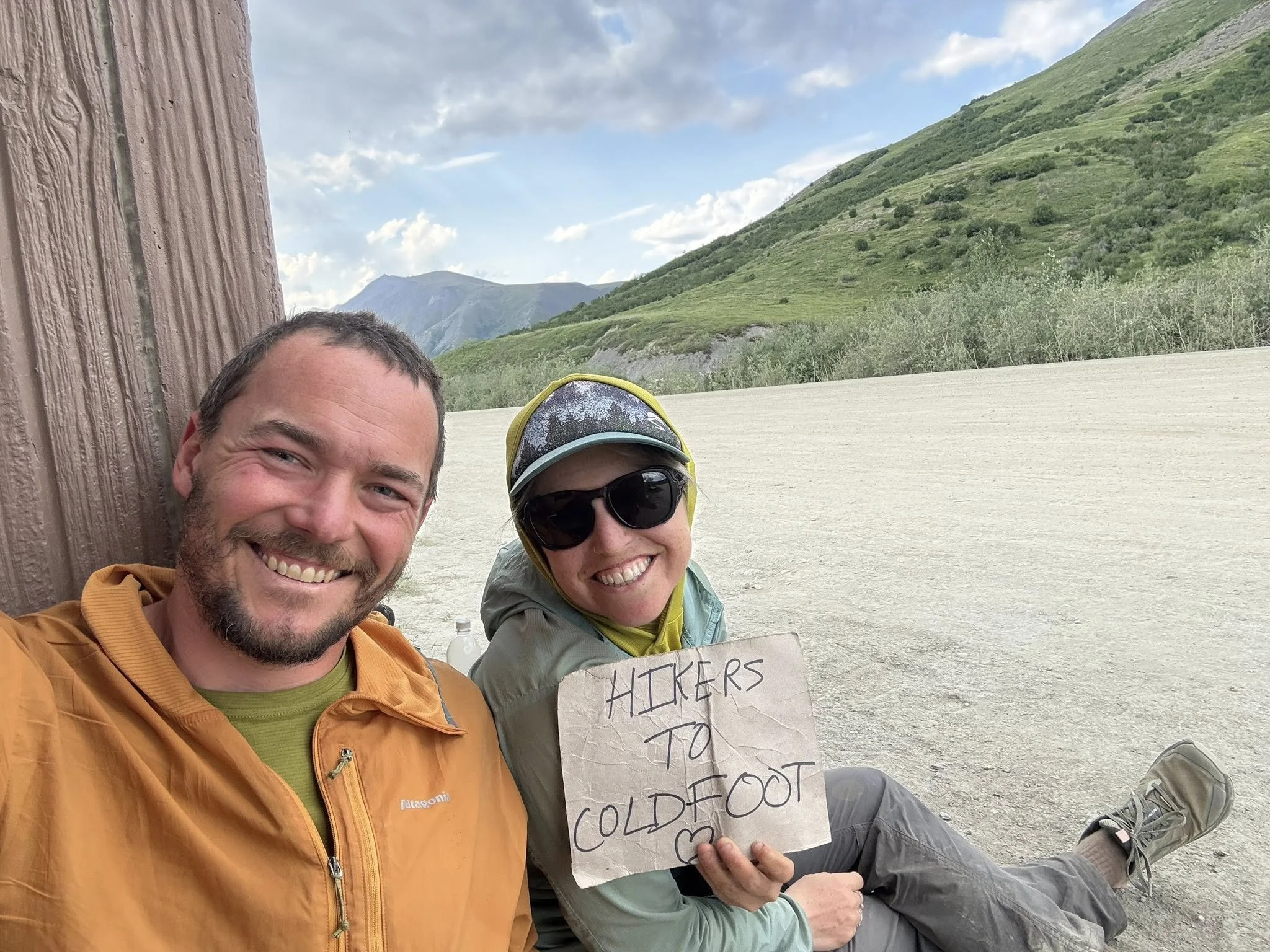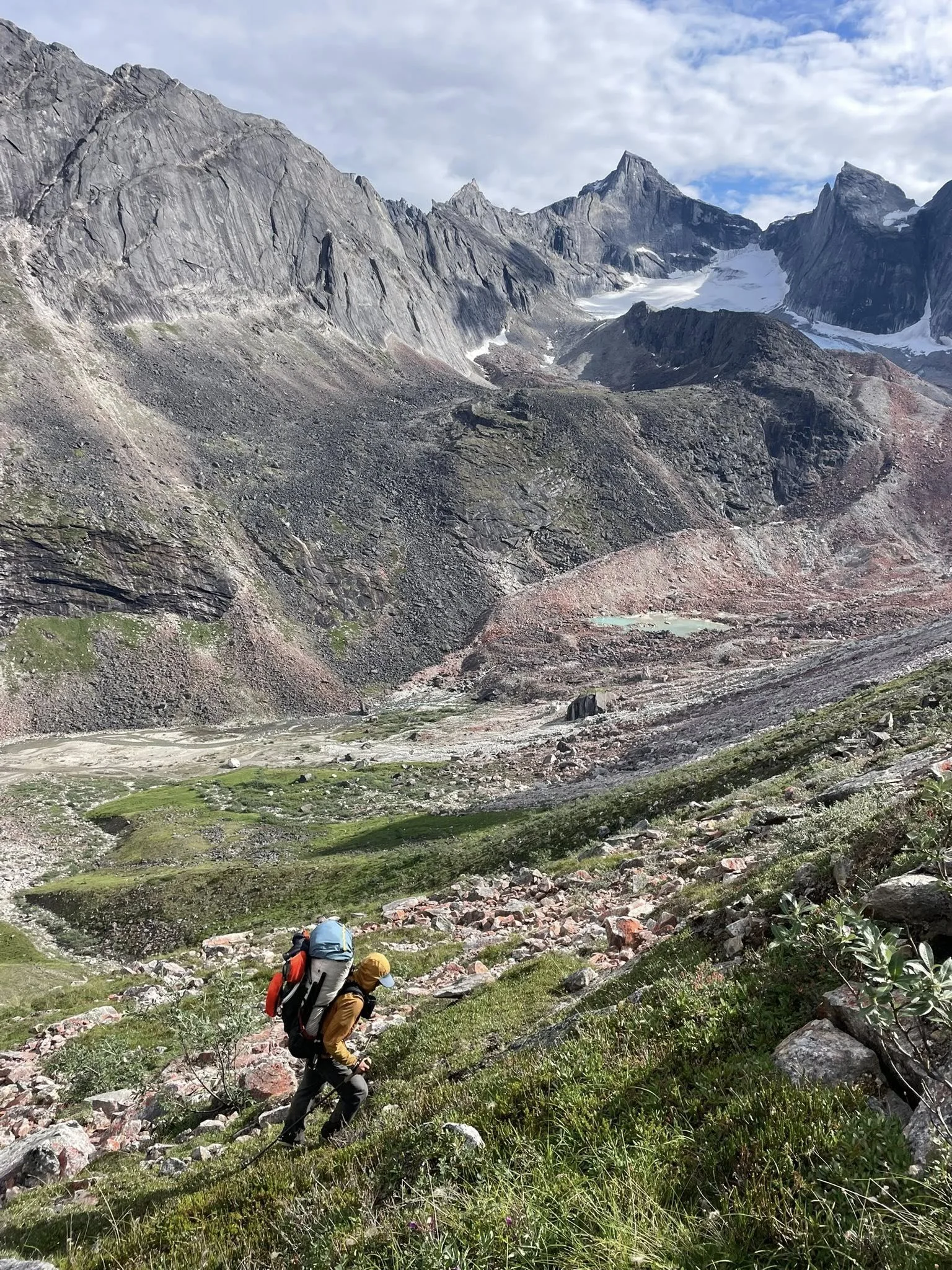Traversing the Brooks Range
Summer of 2025 Vimal “Veg” Golding and Sadie “Sketchy” Curry hiked the Brooks Traverse across the Brooks Mountain Range in Alaska. Sketch is returning to the blog after she broke the self-supported FKT on the Arizona Trail earlier this Spring. Veg and Sketch are both Triple Crowners, have hiked the Hayduke Trail, Great Divide Trail, Sea-Kayaked Seattle to Alaska, and have taken on many more adventures together. Here is Veg’s interview of the Brooks Traverse.
FKT’er Sketchy and Hiking Legend Veg
What time of season did you hike the Brooks Range?
“We started in early June and ended by early august. There was a big storm that dropped a bunch of snow right before we were flown out, and by the time we finished the persistent rain and wind had set in.”
Was there a trail? What did you use for maps?
“There was zero trail for the entirety of the trip. Think of this one like the wind river high route where you only know roughly the route you want to follow. Using Topo maps and Google earth beforehand is the best way to scout the route prior to hiking. You develop a sense for the landscape once you’re out there and improvise the minute details as you go. We used Gaia GPS and carried paper maps as backup. We modified our route often, mostly to see cooler terrain, but also somewhat to avoid snow or tussocks and brush. Using the slope angle layer in Gaia is really helpful to see which passes are crossable. Some people don’t even set a route, they just get dropped off out there and wander. But Alaskans are crazy, so maybe don’t do that the first time.”
What wildlife did you see?
“The Brooks Range was a megafauna heavy trip. Thousands of Caribou, wolves, bears, golden eagles, musk ox, plenty of fish, birds and other critters. It would be worth the weight to bring some binoculars.”
How long is the Brooks Traverse?
“It was somewhere over five hundred miles of hiking and about the same distance on packrafts. Progress in the Brooks Range is slower than a dedicated trail, so two to three months is a typical timeframe for this trip.”
Did you bring any special gear for this trip?
“Thermacell devices were key for mosquitos. There’s a light-ish one that you can buy that runs on butane. Also, full coverage mosquito protection is needed. Otherwise, the big change from our regular hiking gear was that we had packrafts for the second half.”
Also eye covers for sleeping
How many days did it take you to complete?
“The traverse took just over nine weeks.”
What was the farthest point you were away from civilization?
“The spot where we got dropped off was about 330 miles from Fairbanks, 220 miles from the nearest road, a bit over 100 miles from the Gwich’in village of Arctic Village and 100 miles from the Inupiaq village of Kaktovik on the Arctic Ocean.”
What were the food carries and resupplies like?
“We were dropped off at the start in a bush plane, and our pilot set caches of food along the way that we would pick up as we hiked. We bought ammo cans at the military surplus store in Fairbanks which we used to pack all our food in. It was wild! Once your food is dropped there’s no opportunity to change plans. After we reached the food drops the pilot would come back and pick up the ammo cans. We typically carried nine days of food from each resupply which gave us one to two days of extra food in order to allow for unexpected slowdowns or zero days (days we hiked zero trail miles). We crossed one road on this trip and hitched sixty miles to a truck stop to take some days off and eat at a buffet. The buffet was incredible! Depending on which route you take, there’s some villages in the western half that have post offices and small stores. We utilized one of these villages to send a mail resupply and our packrafting equipment.”
What was your favorite moment, section, or day?
“Anytime we could get in the packrafts and float was a special treat. It feels like cheating to be able to make thirty--five miles of easy progress and have the packraft carry all your crap. Yet, some of the worst and most difficult situations involved the packrafts too so it’s a double-edged sword. I also really like the time that we sat slightly off the trail and watched 300+ caribou walk by only twenty yards from us.”
What was your worst moment, section, or day?
“The first section with the packrafts was difficult. We had thirteen days of food plus packrafting gear which easily doubles your base weight (weight of the gear in your pack). The terrain was generally lower elevation which was where the brush and tussocks were worst. There also came the learning curve and mistakes when using the packrafts. Overall it was a really tough section, but it also had some of the trip highlights in it too.”
How would you rate the Brooks traverse to other hikes you've done?
“It was super beautiful and by far the biggest wilderness we’ve hiked into. It was really cool to wander and choose routes, similar to a high route or the Hayduke trail. There are very real challenges and an absolute imperative to be highly self-sufficient beyond any other trail. It’s big wilderness out there and help is nowhere around. Significant wilderness and long trip experience is necessary, so are the characteristics of humility and keeping an even keel in stressful times.”
Have you been to Alaska before? Or this area of Alaska before?
“I’ve been to southeast Alaska a couple of times, including a summer spent working at fisheries in Petersburg. Before this trip I’d never been to mainland Alaska and it’s definitely a different beast.”
What advice do you have for future hikers wanting to hike the Brooks Traverse?
“Be humble, nobody cares how badass you look. The reality is that hiking across the Brooks is pretty bland compared to the thrill of what a lot of folks are doing in Alaska in summer. As I mentioned before, Alaskans are crazy. Andrew Skurka and Carrot Quinn both teach courses in Alaska if you want professional mentorship. If you’ve done a high route or two, plus a couple of route type trails like the Grand Enchantment Trail you’re at a decent starting point on deciding if you’re up to it. Maybe go do a few off trail, DIY routes too just for fun. If you’re planning on packrafting that’s a whole other skill to be competent in before starting. It’s definitely not a trail where you figure it out as you go. Our pilot told a story of refusing to drop a crew off because he could tell that they’d never really used the packrafts before. They ended up calling him back and thanking him for making that decision.”





